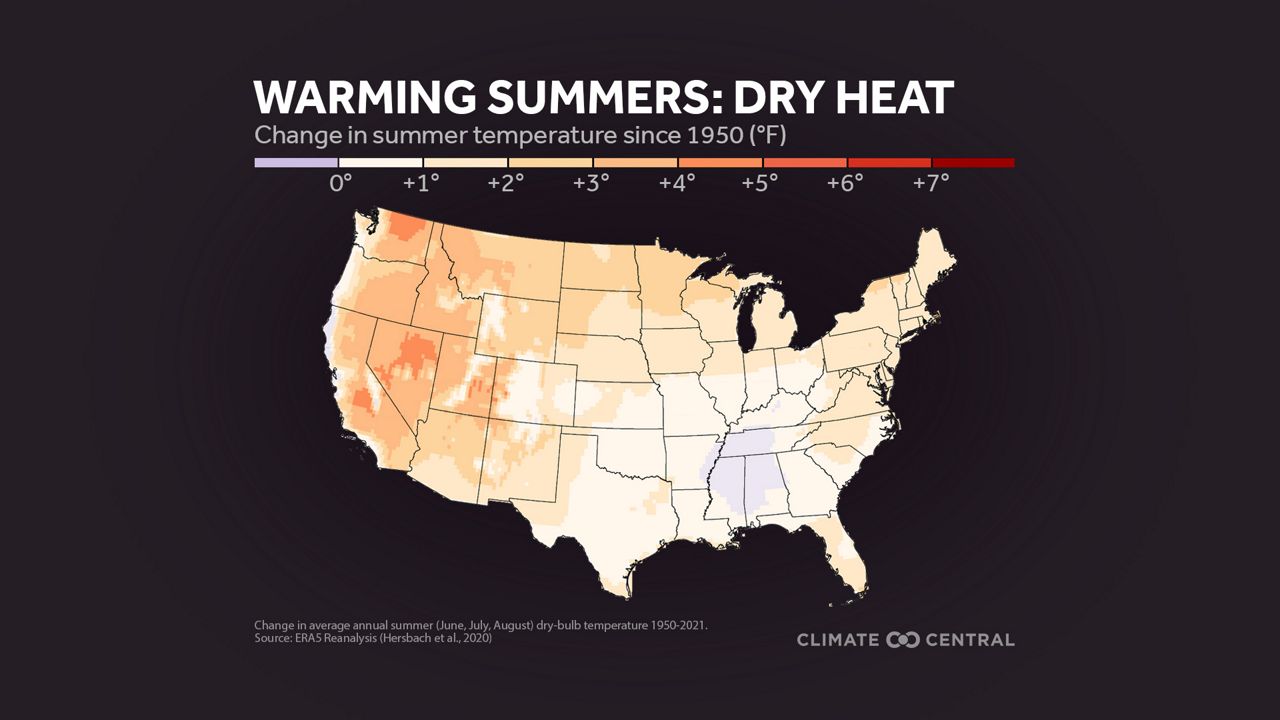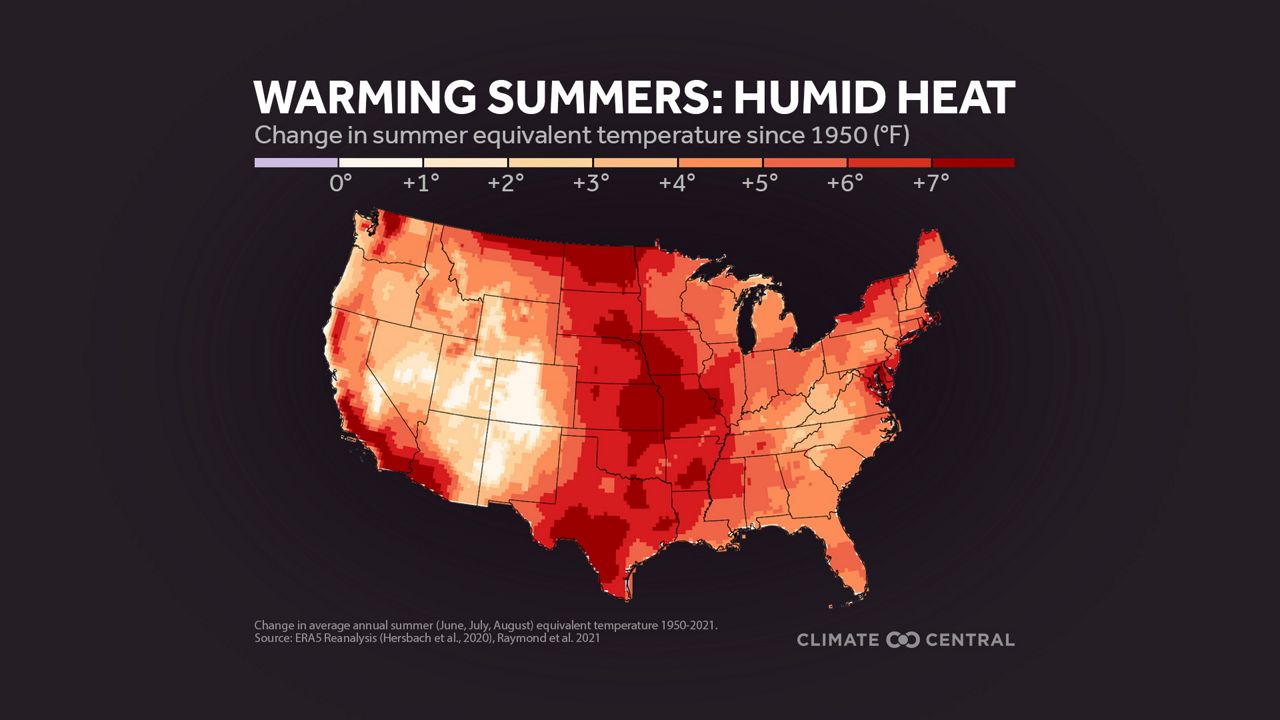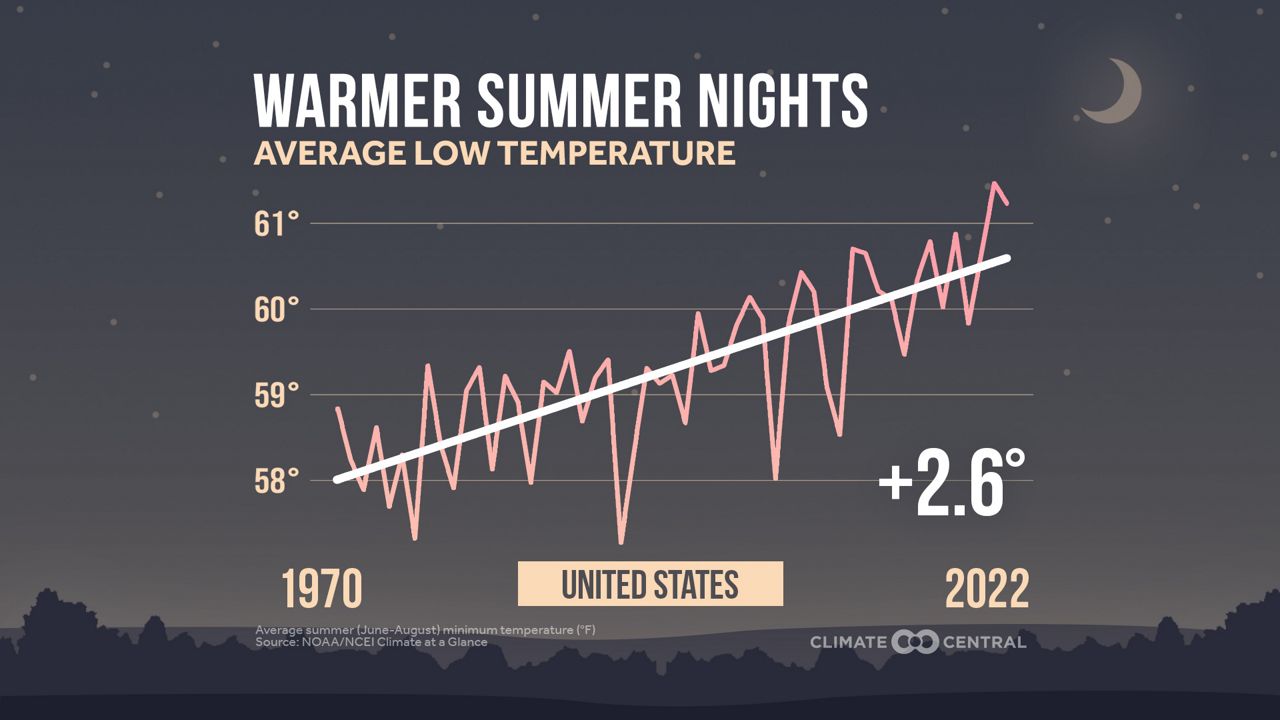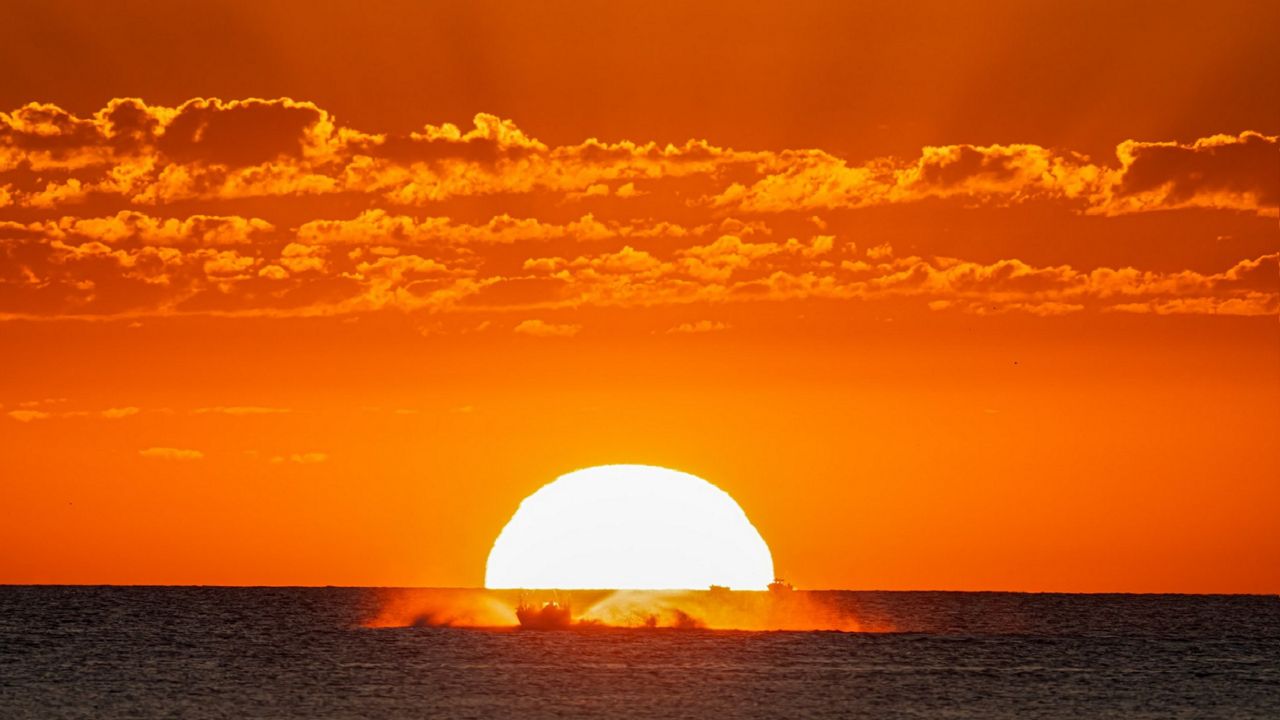The one-two punch of heat and humidity in the summer can become rough for anyone. It’s worse than it used to be, though, and that trend isn’t changing.
Since 1950, most places east of the Rockies have seen summertime temperatures rise by up to two degrees.

But the “equivalent temperature” (combining temperature and moisture, like the heat index) has jumped five to seven degrees.

Warmer air can hold more moisture. As temperatures have warmed, water vapor in the air has also increased. That “humid heat,” as it’s sometimes called, is especially bad because of how hard it is on the body.
Heat-related illnesses, such as heat stroke, are more common on hot days. That lands more people in the hospital. And those living in cities deal with this even more because of the urban heat island effect, making hot days even hotter by as much as 20 degrees.
These things don’t affect everyone equally, though. Young children and older adults are especially vulnerable. Outdoor workers and lower-income communities are also at a higher risk of heat-related illness, according to the National Climate Assessment.
You may have noticed that humid nights are also warmer. Temperatures can’t cool off when it’s super muggy, so you don’t get relief at nighttime. And when that strings along day after day, the heat stress on your body adds up.

Climate Central reports that summer low temperatures in the U.S. have warmed twice as fast as the high temperatures since 1895. Summer lows warmed four degrees over the past 50 years in a quarter of the 230 locations they analyzed, and the number of record warm lows routinely outpaces record warm highs.
Unfortunately, the trend of more humid heat and warm nights isn’t changing. A 2020 study shows that the average number of hot days plus hot nights could quadruple by 2100, just a few generations from now. It also found that, under high carbon emissions, we'll see eight times as many of those each summer.
Our team of meteorologists dives deep into the science of weather and breaks down timely weather data and information. To view more weather and climate stories, check out our weather blogs section.



